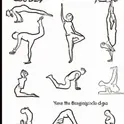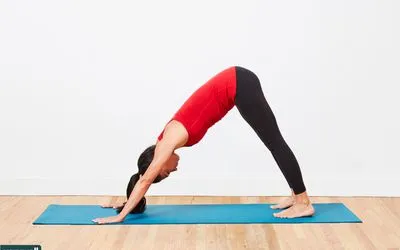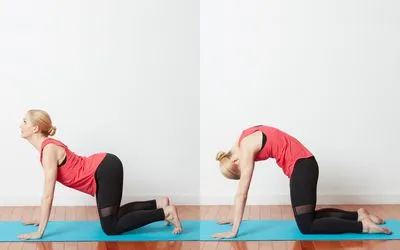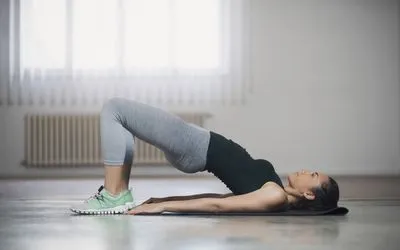The Best Yoga Poses For Sciatica Relief
The Best Yoga Poses For Sciatica Relief
Sciatica is a condition that causes pain, tingling, and numbness in the lower back and legs. It is caused by a pinched nerve in the spine. Yoga can be an effective way to relieve the symptoms of sciatica.
The best yoga poses for sciatica relief are. The downward dog, cat-cow, pigeon pose, bridge pose, and locust pose.
What Is Sciatica?
Sciatica is a condition that can cause pain in the leg and back. The sciatic nerve is the largest nerve in the body, and it runs from the lower back down the leg.
When this nerve is compressed or irritated, it can cause pain, tingling, and numbness. Sciatica can be caused by many things.
Such as a herniated disc, spinal stenosis, or Piriformis syndrome. Treatment for sciatica may include medications, physical therapy, or surgery.
How Yoga Can Help Reduce Sciatica Symptoms
If you are one of the millions of people who suffer from sciatica, you know that the pain can be debilitating. The good news is that yoga can help reduce your symptoms.
Yoga helps to stretch and lengthen the muscles in the back and hips. Which can help to relieve pressure on the sciatic nerve.
Additionally, yoga helps to improve your posture. Which can also help reduce sciatica symptoms.
TheTop 5 Yoga Poses For Sciatica
The Downward Dog
The Downward Dog is one of the most popular yoga poses. It's often used as a resting pose, but it also offers a host of benefits for your body.
The Downward Dog strengthens your arms, legs, and core muscles. It also stretches your shoulders, hamstrings, and calves. This pose can help improve your posture and flexibility.
The Cat-Cow Pose
The Cat-Cow pose is a yoga pose that is often used to warm up the body. It is a simple pose that can be done by anyone, regardless of their level of experience with yoga.
The Cat-Cow pose helps to stretch and open the chest and shoulders. While also strengthening the back and core muscles.
The Locust Pose
The Locust Pose is a challenging yoga pose that targets the glutes and hamstrings. The pose also strengthens the core and back muscles.
To do the Locust Pose, lie on your stomach with your chin on the floor. Extend your legs straight back and press your palms flat into the floor.
Lift your head, chest, and upper legs off the floor while keeping your hips on the ground. Hold for five breaths before releasing.
The Bridge Pose
The Bridge Pose is a yoga pose that is used to improve flexibility and range of motion in the hips and spine. It also helps to strengthen the abdominal muscles and the back.
The Bridge Pose is performed by lying on your back on the floor. Then lift your torso and legs into the air, so that your body forms a bridge shape.
You can hold this position for as long as you are able to maintain proper form. Then slowly lower yourself back down to the floor.
The Pigeon Pose
The pigeon pose is a yoga pose that stretches the hips and thighs. This pose can be difficult for beginners. So it is important to take your time and practice patience when working on this pose.
To get into the pigeon pose, start by sitting on your mat with your legs out in front of you.
Place your left ankle above your right knee, then scoot your left foot forward until you feel a stretch in your hip. Stay here for five breaths before switching legs.
Conclusion
In conclusion, practicing yoga. Can be an incredibly effective way to manage and relieve sciatica pain.
Of the poses mentioned. The downward dog, cat-cow, pigeon pose, bridge pose, and locust pose are among the best.
If you are suffering from sciatica. Consider giving these poses a try and see if they provide you with some relief.
FAQs
What is sciatica?
Sciatica is an inflammation of the sciatic nerve. Which runs from the back of the hip to the foot. It can cause pain, tingling, numbness, and weakness in the iliopsoas muscle.
Your sciatic nerve runs next to your spine, along the outside of your hip bone, and down the outer side of your leg.
When it’s irritated or compressed, it can cause pain in your legs and back.
What are the best yoga poses for sciatica relief?
But, some poses may be helpful for relieving sciatica pain. Include the Child's Pose, Downward Dog, and Cat-Cow pose.
It is important to consult with a healthcare professional. Before starting any new exercise routine. Especially if you are experiencing any pain or discomfort.
What is a good yoga workout for sciatica relief?
Yoga is a great way to relieve sciatica pain. There are many poses that can help to stretch and release the tension in the sciatic nerve.
Some of the best poses for sciatica relief are the cat-cow pose, the child's pose, and the pigeon pose.
Can yoga help sciatica?
There is some evidence that yoga can help relieve the symptoms of sciatica. One study found that participants who took a yoga class twice a week for 12 weeks.
Had less pain and improved function compared to those who did not take yoga.
But, more research is needed to confirm these findings. If you are experiencing sciatica. It is best to consult with a healthcare professional to find out what treatment is right for you.
How can I prevent sciatica?
There are a few things you can do to help prevent sciatica.
First, make sure you maintain a healthy weight, as being overweight can put extra strain on your back.
Second, exercise regularly to keep your back and core strength.
Third, avoid sitting for long periods of time. When you have to sit, make sure to take breaks and move around periodically.
And finally, if you experience any symptoms of sciatica, seek medical help right away.
What are the causes of sciatica?
There are many potential causes of sciatica. Including herniated discs, spinal stenosis, and piriformis syndrome.
In most cases, the cause is never determined. But, it is often caused by some sort of compression or irritation of the sciatic nerve.
What is the difference between sciatica and piriformis syndrome?
Sciatica is a condition. That results when the sciatic nerve is compressed or irritated. This can cause pain, tingling, and numbness that radiates down the leg.
Piriformis syndrome is a condition. That results when the piriformis muscle becomes tight and compresses the sciatic nerve. This can cause pain, tingling, and numbness in the buttock and down the leg.
What is the difference between a hamstring and a quadricep?
Hamstrings are muscles located on the back of the thigh. And quadriceps are muscles located on the front of the thigh.
Hamstrings attach to the ischium (lower pelvis). And quadriceps attach to the tibia (shinbone). The hamstrings flex the knee, and the quadriceps extend the knee.



